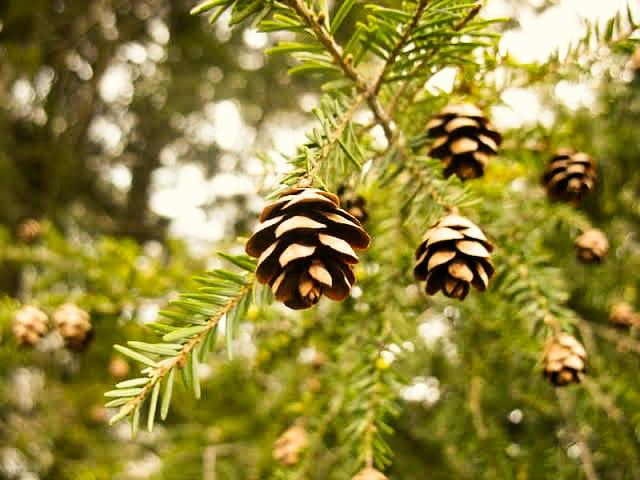
Answer
463.5k+ views
Hint: Both gymnosperm and angiosperm are vascular plants having a life cycle of sporophyte -dominant one. Angiosperms have variegated colors and shapes of leaves, flowers, and fruits because of many varieties of the fruits and flower-bearing plants. Whereas gymnosperms are anatomically simpler because they do not bear flowers or fruits but the cones are present.
Complete answer:
Note:
1. The gymnosperms have originated in the late Carboniferous period, replacing the lycopsid rainforests of the tropical region. Whereas the angiosperms have originated in the late Cretaceous period, which is about 125 million years ago.
2. Today 1000 species of gymnosperms are known whereas 300000 species of angiosperms are known.
Complete answer:
| Gymnosperms | Angiosperms |
| These are flowerless plants in which cones and seeds were produced. They bear seeds that were naked or unenclosed. | These are flowering plants which bear seeds in fruits or mature ovaries. The seeds are enclosed within an ovary. |
| These are evergreen plants of softwood type. | 2. These are seasonal plants of hardwood type. |
| Leaves are needle-like or scale-like in shape. | 3. Leaves are flat in shape. |
| 4. Reproduction mostly relies on winds. | Reproduction mostly relies on pollinators. |
| The reproductive system is present in cones and is unisexual. | 5. The reproductive system is present in flowers. They can be unisexual or bisexual. |
| Cone is a female reproductive organ whereas pollen is the male reproductive organ. | 6. Flower carries both male reproductive organs (stamen) and female reproductive organs (pistil). |
| These plants are used in the making of various medicines, food, clothing, etc. | 7. These plants are used in the making of paper, lumber, etc. |
| Example- cypress, gnetum, pine, spruce, redwood, ginkgo, cycads, juniper, fir, and welwitschia. | 8. Example- roses, lilies, Broccoli, kale, Petunias, Eggplant, Tomato, Peppers, and sugarcane. |
| Gymnosperms have haploid tissue. | 9. Angiosperms have triploid tissue. |

| 
|
Note:
1. The gymnosperms have originated in the late Carboniferous period, replacing the lycopsid rainforests of the tropical region. Whereas the angiosperms have originated in the late Cretaceous period, which is about 125 million years ago.
2. Today 1000 species of gymnosperms are known whereas 300000 species of angiosperms are known.
Recently Updated Pages
Which body formulates the foreign policy of India class 10 social science ICSE

What is the message of the poem Nine Gold Medals class 10 english ICSE

Give the summary of the story the enchanted pool class 10 english ICSE

Fill in the blank The nearest meaning of the expression class 10 english ICSE

Summary of the poem Where the Mind is Without Fear class 8 english CBSE

What is the feminine gender of a stag class 8 english CBSE

Trending doubts
Give 10 examples for herbs , shrubs , climbers , creepers

Difference between Prokaryotic cell and Eukaryotic class 11 biology CBSE

What organs are located on the left side of your body class 11 biology CBSE

Distinguish between asexual and sexual reproduction class 12 biology CBSE

How much time does it take to bleed after eating p class 12 biology CBSE

When people say No pun intended what does that mea class 8 english CBSE

What is BLO What is the full form of BLO class 8 social science CBSE

Summary of the poem Where the Mind is Without Fear class 8 english CBSE

Difference Between Plant Cell and Animal Cell




